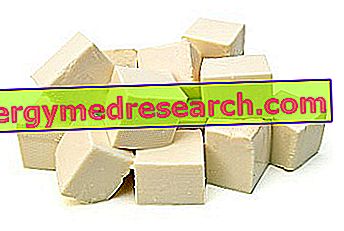Premise
In the previous article we described the main characteristics of manganese, analyzing its beneficial effects within the organism and the various technological and biological fields of application. In this concluding discussion we will study the importance of manganese and its potential toxicity when taken in excessive doses. Finally, a mention should be made of foods rich in this precious mineral and interactions with other natural and synthetic substances.
Deficiency symptoms

Fortunately, in man the symptoms of manganese deficiency, not so marked, are rarely found; when present, humans may complain of myasthenia gravis and ataxia. It is hypothesized that a deficiency of this trace element could cause damage to reproductive capacity, development, formation of bones and cartilages, metabolism of fats and carbohydrates, with possible consequences on diabetes and hypercholestrolemia. [from Nutrition in naturopathy, by L. Pennisi]
Manganese toxicity
If on the one hand manganese deficiency in the body does not trigger serious unquestionably proven effects, on the other the excess of this mineral can have serious effects on human health. So much so that we talk about real chronic manganese poisoning : generally, intoxication occurs due to prolonged inhalation of smoke and / or dust from the trace element. The maximum limit beyond which manganese is defined toxic is estimated around 5mg / m3-1 mg / m3.
The damage caused by manganese intoxication mostly involves the central nervous system: poisoning can cause permanent damage. Furthermore, it is believed that manganese and its derivatives are potentially carcinogenic substances.
Following frequent and prolonged exposure to manganese fumes (a typical hazard of the metalworking industry) numerous cases of Parkinson's disease have been highlighted: in this regard, manganese is included in the list of toxic and dangerous substances, prepared by OSHA ( Occupational Safety and Health Administration ).
Following manganese poisoning, several symptoms were recorded, including weakness, leg cramps, drowsiness, paralysis, languor, impotence, emotional disturbances and irritability.
Miners are not rare effects such as hallucinations, tendency to violence, irritability: for this reason intoxication is also known with the term "manganese madness"
Manganese and dosages
The recommended daily requirements (RDA) of manganese are estimated between 2 and 4 mg: this quantity has generated great confusion among scholars, as for some - given that the actual absorption (and not hypothetical) of the mineral is rather poor - the dosage seems to be too low. For some, the manganese RDA should be around 20 mg / day, or even 50 mg in therapy; however, 2 or 3 mg of manganese per day does not seem to trigger deficiency or excess effects and the 0.74 mg / day value is the minimum daily requirement.
It must be remembered that manganese is almost completely eliminated via the bile duct, although the entero-hepatic circulation reduces its losses.
In urine, manganese is found only in very low percentages.
First we mentioned a poor absorption of the mineral: it is considered possible that the manganese coming from the diet is absorbed in a variable percentage from 5 to 10%, even if - it should be underlined - the absorption efficiency is considered greater in case of poor nutritional intake. [taken from www.valori-alimenti.com]
Among the foods source of manganese we recall (doses referred to 100 grams of food):
- Tea 133 mg
- Ginger 33.3 mg
- Cloves 30 mg
- Saffron 28.4 mg
- Mint (dried drug) 11.4 mg
Interactions
It is considered possible that the intake of foods or supplements containing iron may hinder the absorption of manganese, given that both use transferrin as the ideal blood transport molecule. The same goes for calcium and phosphorus, minerals that can interact with manganese limiting absorption.
The absorption of manganese in subjects suffering from severe hypertension can be hindered, since the trace element under examination is considered a hypertensive mineral.
Even taking the contraceptive pill can limit the absorption of manganese.



